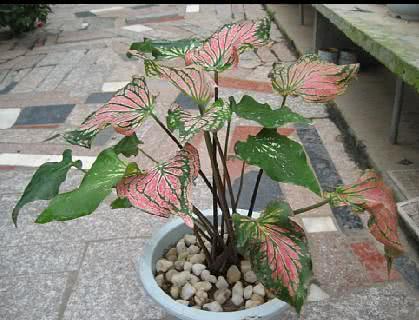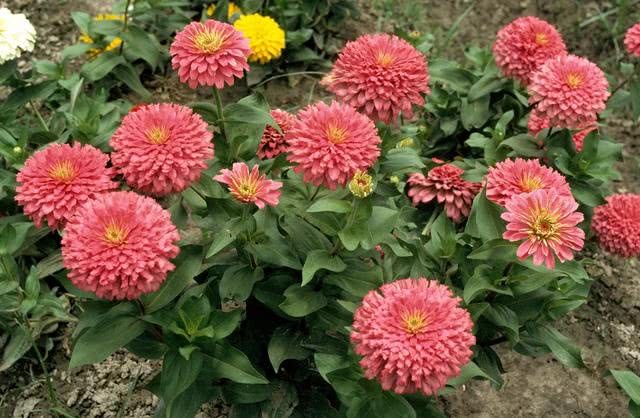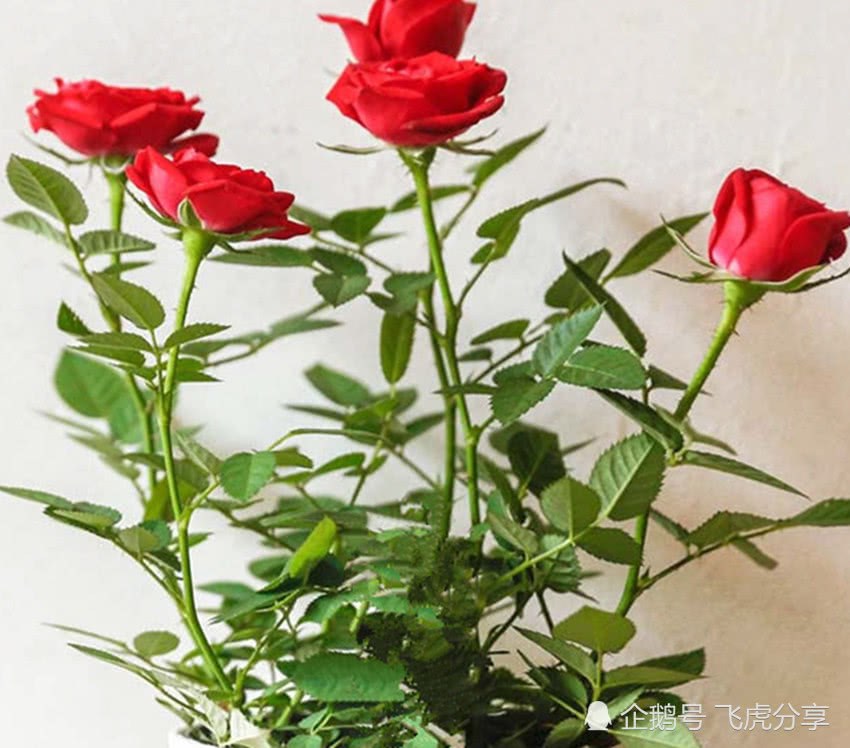Flower and leaf taro bonsai maintenance is skillful, light soil should pay attention to growing large flowers is easy

Flower-leaf taro is also known as colored-leaf taro, its leaf shape is oval or nearly heart-shaped, and the color is relatively bright, usually the middle of the leaf is bright red, while the outer leaf is green, so people often call it "two-color taro". In addition, there are all kinds of spots on the leaves, and the back of the leaves are mostly pink-green, with the change of seasons, the leaf color will gradually become darker, so it is suitable for cultivation and ornamental in indoor or promenade, courtyard corners, with very good ornamental value.
I. cultivation of taro
The method of ramet propagation is often used in the planting of taro, which is because this method has a high success rate and is suitable for cultivation all the year round, but the family potted taro is more recommended to be planted by cutting. Every spring and autumn are more suitable for cutting to plant taro, need from the well-growing taro plant, cut off the more tender green branches and leaves, the length is about 10 cm, but in this process need to do a certain degree of protection measures, such as wearing gloves, so some varieties of taro leaves have irritating effect on the skin, so we need to be extra careful.
Then use the appropriate disinfectant to spray on the wound of the branch and wait for it to heal, which usually takes a day or two; before that, you have to cut off most of the leaves of the branch, leaving several leaves at the top. Cuttings should also pay attention to the protection of the opponent, after pouring the right amount of water, you can quietly wait for the branches to take root. Generally, after three weeks, the branches can be seen to take root, and then cultured for another week, the seedlings will be able to grow a small number of leaves, at this time can enter the normal management of potted plants.
II. Maintenance of taro
1. Light condition
Potted taros are more suitable for growing in semi-shady places, but they need to be exposed to appropriate astigmatism to ensure the good growth of plants. At the same time, the position of the potted plants is more fastidious, generally from early morning to noon, the whole potted plants can be exposed to the sun, while the afternoon sun is more violent and needs proper shading, especially at noon in summer. otherwise, the branches of the plant will be burned by the sun, affecting its ornamental. According to the change of temperature, the time of receiving light can be appropriately changed. if the sun is warmer in spring and autumn, which is suitable for the growth of taro, it should make the plant receive more light, while the practice in summer is just the opposite.
two。 Soil condition
As the growth of taro on barren soil is often underdeveloped, it is particularly important for the choice of culture soil, generally choose more fertile and loose good humus or sandy soil, so that plants smoothly through the growth period of seedlings, but also have a greater impact on the ornamental of plants.
3. Watering requirement
The flower and leaf taro is not resistant to waterlogging, but it is necessary to ensure that the basin soil has a certain wet state, so the requirements for watering are relatively strict. Usually, whether or not to be watered should be judged according to the soil and leaf color. If the soil is relatively dry and the leaf color is not bright, it often shows that the plant is in a state of lack of water. At this time, an appropriate amount of water should be watered, probably every three days or so.
On the other hand, watering also needs to be adjusted according to the change of weather or air humidity. for example, when the rainy season comes, the air humidity will increase significantly over a period of time. If watering is as usual, it may lead to stagnant water in potted plants. therefore, special attention should be paid to it.
- Prev

Fireball flowers bloom for a long time, strong ornamental cuttings, pay attention to disinfection, and the pots will be full of flowers.
Zinnia, also known as fireball, its plant height is moderate, the general adult zinnia is usually about 50-80 cm, the bud has multiple flowers, and the leaf surface has a little fluff, the edge of the flower color is black, and most of it is crimson.
- Next

A few grains are buried in the flowerpot. Its branches and leaves grow continuously, no matter whether they are thin or yellow and turn green immediately.
The most hope of growing flowers is to let their favorite flowers grow fat, prosperous and green, but sometimes they are not as good as they want. Always feel why their hard-working flowers always grow bad, why they always like to turn yellow. Say it again.
Related
- Wuhan Hospital Iron Tree Blooming Result Was Instantly Frightened by the Gardener Master
- Which variety of camellia is the most fragrant and best? Which one do you like best?
- What is the small blue coat, the breeding methods and matters needing attention of the succulent plant
- Dormancy time and maintenance management of succulent plants during dormancy
- Minas succulent how to raise, Minas succulent plant pictures
- What are the varieties of winter succulent plants
- How to raise succulent plants in twelve rolls? let's take a look at some experience of breeding twelve rolls.
- Attention should be paid to water control for succulent plants during dormant period (winter and summer)
- Watering experience of twelve rolls of succulent plants
- Techniques for fertilizing succulent plants. An article will let you know how to fertilize succulent plants.

